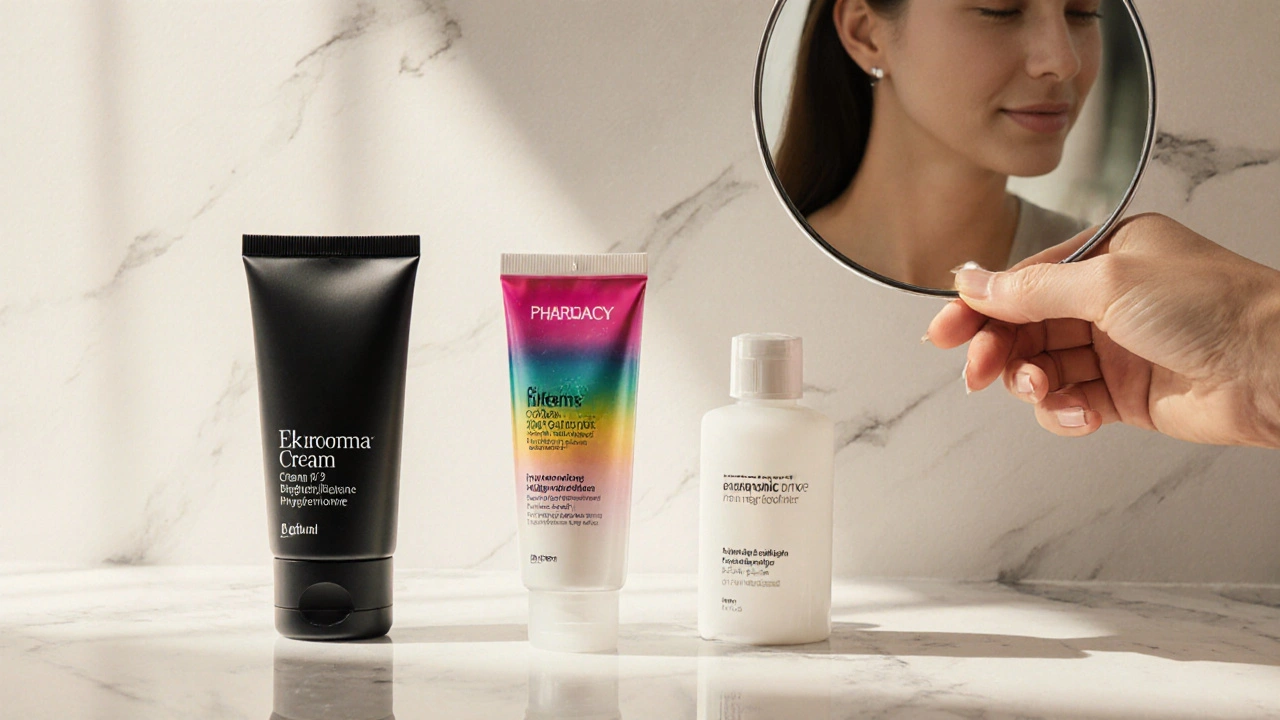Hydroquinone Cream: What It Is, How It Works, and What to Know Before Using It
When you’re dealing with stubborn dark spots, melasma, or post-acne marks, hydroquinone cream, a topical skin-lightening agent used to reduce hyperpigmentation by slowing melanin production. Also known as skin bleaching cream, it’s one of the most studied treatments for uneven skin tone. Unlike random over-the-counter brighteners, hydroquinone targets the actual cells that produce pigment, making it more effective—but also more powerful. It’s not a miracle cure, and it’s not for everyone. But for many people with melasma, sun damage, or hormonal discoloration, it’s the first line of defense doctors recommend.
Hydroquinone cream doesn’t work like a chemical peel or laser. It doesn’t strip layers of skin. Instead, it quietly interrupts the process that creates excess melanin. Think of it like turning down the volume on your skin’s darkening signal. It’s often paired with other ingredients like tretinoin or corticosteroids to boost results and reduce irritation. But it’s not meant for long-term daily use. Most dermatologists suggest using it for no longer than 3 to 6 months at a time, then taking a break. Why? Because overuse can lead to ochronosis—a rare but serious condition where the skin turns blue-black instead of lighter. That’s why it’s often sold by prescription in higher strengths (4% or more), and why even the 2% versions sold online need careful handling.
Related to hydroquinone cream are other skin-lightening options like azelaic acid, a naturally occurring compound that reduces pigmentation without the same risks as hydroquinone, and kojic acid, a fungal byproduct used in many brightening serums. These are gentler, safer for longer use, but slower. If you’ve tried vitamin C serums or niacinamide and seen little change, hydroquinone might be the next step. But if you’re pregnant, nursing, or have sensitive skin, you’ll want to talk to a doctor first. Many of the posts below compare hydroquinone with alternatives, share real user results, and warn about common mistakes—like using it with harsh exfoliants or skipping sunscreen. Sunscreen isn’t optional here. Without it, hydroquinone can make dark spots worse.
What you’ll find in the collection below aren’t just product reviews. These are real-world guides from people who’ve used hydroquinone cream, switched to alternatives, or battled rebound pigmentation. You’ll see comparisons with topical steroids like clobetasol, learn how it interacts with other skin treatments, and discover why some users see results in weeks while others see nothing. There’s no one-size-fits-all answer. But with the right info, you can avoid the pitfalls and use hydroquinone cream safely—if it’s right for your skin.
A detailed side‑by‑side look at Eukroma Cream (2% hydroquinone) versus top over‑the‑counter and prescription alternatives, covering effectiveness, price, safety, and how to choose the right brightening treatment.
Sep, 28 2025

